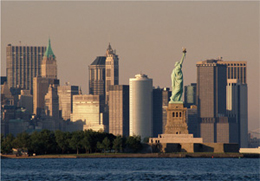Whether riding the momentum from the JCK Vegas show or
trudging through what are typically slow summer months, wholesalers know that
to survive in the domestic market, they need to offer a large selection of
certified goods.
“I would say certifications are a very important aspect of
what jewelers and consumers want when ordering a diamond,” explained Andrew
Rickard, vice president of operations at the Rochester, New York–based loose
diamond and jewelry manufacturer RDI Diamonds. “Fewer and fewer jewelers are
willing to accept a diamond that is noncertified. The biggest question isn’t
whether they want it certified, but more what certificate is required.”
As certain certification labs are more well known than
others, the goods they certify are usually in high demand and harder to
restock. “In the promotional and commercial goods, we have a strong inventory,
which we are steadily replenishing. However, goods with Gemological Institute
of America (GIA) certificates are a bit more difficult to replace,” noted Jay
Gilbert, owner of the Los Angeles–based Coast Diamond, a manufacturer of
fashion and bridal jewelry.
Overall, certificates usually are requested for larger, more
expensive stones, “especially those larger than 1.50 carats in both round
and fancy shapes,” said Greg Telonis, president of Mr. Baguette, a manufacturer
of small, loose diamonds and jewelry in New York City. Recently, however, they are becoming
increasingly important for less expensive stones. “Especially this summer, we
are seeing more and more I1 and I2 stones being sold with certificates,”
observed Gilbert.
Certifications also are a staple in the bridal market.
“Certificates are used quite often in center stone purchases,” said Telonis.
“Occasionally, there are requests for certified stones in earrings or
bracelets, but very infrequently.”
Even with the use of certifications to attract sales,
however, many wholesalers have found themselves at the mercy of an unusually
unpredictable market this August — which, depending on whom one talks to, was a
good thing or a bad thing.
Some wholesalers, for example, saw a slowdown that was more
pronounced than predicted. “The market has been the quietest we have seen for a
while,” observed Ann S. Arnold, chief executive officer (CEO) of bridal
wholesaler Lieberfarb, a manufacturer and designer of bridal jewelry in Rahway,
New Jersey. “After a very positive JCK Vegas show, the market has gone
into ‘sleep mode.’ The factors contributing to this would seem to be a
combination of a good show where budgets were already spent, and typical
election year conservatism.”
Other wholesalers, however, saw a strikingly different
market. “Sales over the past few weeks have been steady,” noted Rickard. “Those
ordering are selling, so that’s a good sign.” Telonis’ situation was similar.
“Sales for the past eight weeks have been moderate,” he said. “There is
business to be made, but the requests are very specific.”
A few wholesalers had an exceptionally strong August.
“Considering that it’s summertime, sales have been surprisingly really strong,”
said Gilbert. “This, I believe, is due to a combination of jewelers getting
used to the strong prices and having the right goods.”
In the bridal market “rounds for engagement rings and
anniversary bands in G or H color that are up to one-third of a carat in size
are selling well,” noted Arnold. And while “rounds continue to outsell fancies,
fancies are gaining momentum,” said Rickard. Telonis confirmed this demand,
noting that “Fancy shapes have remained popular, with cushions and radiants at
the forefront, and baguettes and ovals in high demand.”
Demand also is stemming from consumers who are on the
lookout for unique jewelry pieces. “The handmade customized jewelry is still
selling well for the retailers,” said Telonis.
The price dynamics that started in July have continued on
into August. “Prices for rounds have come down a few points, while princesses
have increased,” noted Arnold. “Overall,” said Rickard, “fancy pricing remains
higher based on limited supplies and increased demand.”
While softer round prices have been a staple in the market
for most of the summer, their impact has not yet changed the selling habits of
retailers. “When prices soared, almost all retailers lowered the quality they
were selling by a full grade. They have not been raising the quality as prices
go down,” observed Arnold.
Though many in the industry are concerned about any
instability the coming election might bring to the national economy, they are
confident that the wholesale market will be resilient through the fall and
winter seasons. “Despite the uncertainty in the upcoming elections, we are
guardedly optimistic that it will be a stronger season than 2011,” said
Gilbert.
A few also warn, however, against getting too comfortable
with the decreasing prices on rounds this summer. If the market does stay
steady, they predict prices are sure to increase. “Only a world crisis will
create precipitous decreases in the price,” cautioned Telonis.

THE MARKETPLACE
• Rounds are selling well in .33-carat to 3-carat sizes, while
fancies are selling well in 1-carat to 3-carat sizes.
• There is a higher demand for certificates for VS1 to SI2
stones.
• The most popular fancy shapes are princesses, cushions and
radiants, though there is strong demand for ovals and baguettes as well.
• Prices for rounds are continuing to decrease, while the
prices for princesses are on the rise.
• Wholesalers are having trouble restocking Gemological
Institute of America (GIA)-certified stones and princesses in SI2 to I1 quality.
Article from the Rapaport Magazine - September 2012. To subscribe click here.